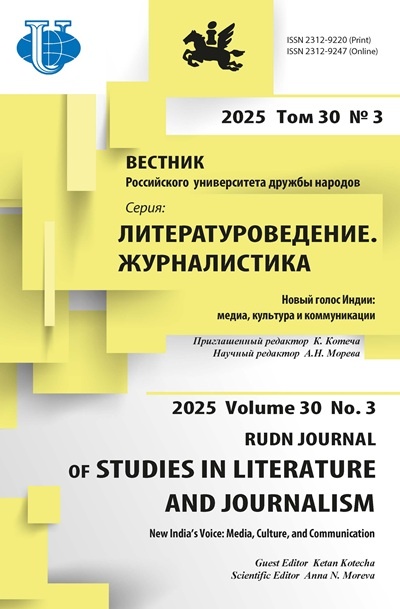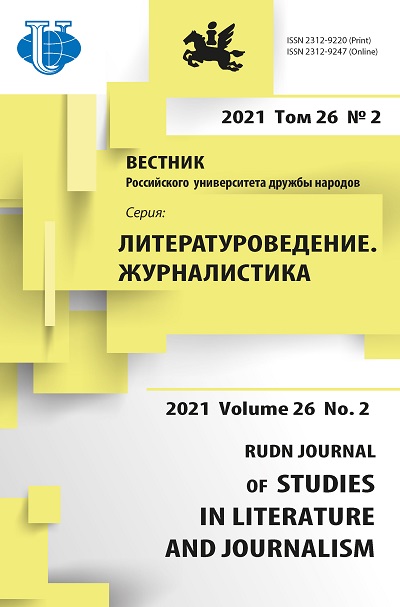Киберспорт в интернете: обзор российских и зарубежных медиаресурсов
- Авторы: Чернявская А.Г.1
-
Учреждения:
- Российский университет дружбы народов
- Выпуск: Том 26, № 2 (2021)
- Страницы: 325-330
- Раздел: Рецензии. Обзоры
- URL: https://journals.rudn.ru/literary-criticism/article/view/26950
- DOI: https://doi.org/10.22363/2312-9220-2021-26-2-325-330
- ID: 26950
Цитировать
Полный текст
Аннотация
Миллионы людей по всему миру смотрят киберспортивные матчи и следят за новостями киберспортивных команд и игроков. Благодаря пандемии COVID-19 киберспортивный рынок получил беспрецедентный рост аудитории. Цель исследования - выявить и сравнить специфические особенности развития киберспортивных интернет-ресурсов в тех странах, где наиболее развит киберспорт. Рассматривается контент сайтов Южной Кореи, Китая, США и России. Дается статистика посещаемости как маркер популярности киберспортивных интернет-ресурсов среди аудитории. Приводятся данные о количестве просмотров и количестве посетителей сайтов для каждой страны (в течение дня, месяца и года). Установлено, что азиатский спортивный медиарынок предпочитает использовать видеоформат для передачи контента. Иная ситуация в США и России, которые по-прежнему отдают приоритет текстовой информации, сопровождаемой видео.
Об авторах
Алина Геннадиевна Чернявская
Российский университет дружбы народов
Автор, ответственный за переписку.
Email: alya_z@inbox.ru
аспирант, кафедра массовых коммуникаций, филологический факультет
Российская Федерация, 117198, Москва, Миклухо-Маклая, д. 10, корп. 2Список литературы
- Paris, D., & Herweck Paris, S. (2016). History of video games. California, Teacher Created Materials.
- Волкова И.И. Компьютерные игры и новые медиа: игровой подход к коммуникациям в виртуальном пространстве // Вестник Российского университета дружбы народов. Серия: Литературоведение. Журналистика. 2017. Т. 22. № 2. С. 312-320. http://dx.doi.org/10.22363/2312-9220-2017-22-2-312-320
- Josh, G. (2020). History of ESports (21st century skills library: ESports live). Cherry Lake Publishing.
- Troupe, T.K. (2019). Fighting game ESports: The competitive gaming world of super smash bros, street fighter, and more! Minnesota, Capstone Press.
- Goetomo, F. (2016). ESports in Korea: A study on League of Legends team performances on the share price of owning corporations. CMC Senior Theses. Paper 1356.
- Elsden, T. (2020). Five trends shaping the Chinese esports landscape. Retrieved February 7, 2021, from https://www.sportspromedia.com/opinion/china-esports-trends-tencent-league-of-legends-media-rights-sponsorship
- Lord, T.J. (2016). The history and future of ESports in America. Retrieved February 26, 2021, from https://www.fandom.com/articles/history-future-esports-america
- Rodie, S. (2020). How Europe’s tech hubs are pushing ESports to the next level. Retrieved March 9, 2021, from https://www.bdo.global/en-gb/blogs/tech-media-watch-blog/december-2020/how-europe%E2%80%99s-tech-hubs-are-pushing-esports-to-the-next-level
- Russian E-Sports Federation, accreditation in the ministry of sport. (2017). Retrieved February 18, 2021, from https://ie-sf.org/news/3632
- Kim, A., Qian, T.Y., et al. (2020). Growth in sport media and the rise of new sport fandom. Multidisciplinary Perspectives on Media Fandom (pp. 150-171). Hershey, IGI Global.
- Чернявская А.Г. Специфика организации киберспортивных трансляций // Средства массовой коммуникации в многополярном мире: проблемы и перспективы: материалы IХ Всероссийской научно-практической конференции. М.: РУДН, 2018. С. 255-259.
- Larch, F. (2019). Seoul - the Home of eSports. Retrieved March 7, 2021, from https://www.ispo.com/en/markets/seoul-how-city-addicted-esports
Дополнительные файлы















